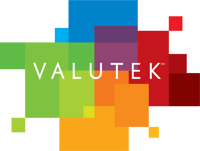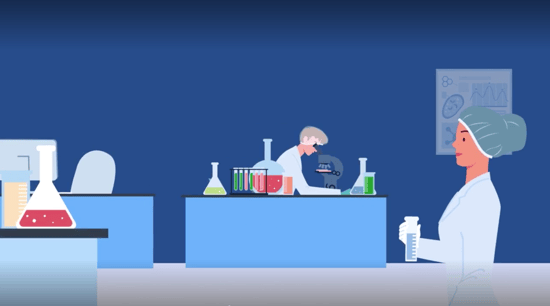Paper is used daily in controlled environments to document work instructions, manuals, job orders, SOP’s, outcome observations, forms and more. Standard paper is made of cellulose, specifically wood pulp and fibers. While this type of paper is common in offices, it is a substantial source of contamination since it releases particulates when used, folded, cut or torn.
If regular paper is a contaminant, what are your options in the cleanroom?
If you feel a sheet of standard paper and hold it up to light, you’ll feel a rough surface and see variable thicknesses in the paper. If you feel and look closely at calendared, coated cleanroom paper, you’ll feel a smooth surface and see uniform thickness when it’s held up to light.
Paper, Notebooks and Notepads Selection Criteria
Let’s look at five criteria to help you select paper, notebooks and notepads for your controlled environment.
1. Substrate without fillers:
Cleanroom paper starts with the same base as standard paper: cellulose. Your cleanroom documentation producer should be using a high-quality, low-particulate source. Check the manufacturer’s specifications or ask your producer if any fillers are in the substrate. Ash fillers are commonly used to reduce manufacturing costs but these low-cost fillers release particulates if you tear, cut or fold the paper.
2. Uniformity:
Cleanroom paper has a cellulose base with a process of compression and heat applied – called calendaring – to reduce fiber size, add stability and improve uniform flatness. Calendaring produces a smooth, uniform, low-particulate paper that you can see and feel.
3. Latex or synthetic coating:
The calendared paper is impregnated with latex or synthetic coating to encapsulate particulates. Coating quality is important since, along with calendaring, has the most impact on cleanliness. Check your manufacturer’s specifications (or ask) for the type of coating used since lower-quality latex or resins will adversely impact cleanliness.
4. Color coding:
Cleanroom paper comes in various colors to clearly identify its purpose in the controlled environment. Blue is the universal color for flat stock paper used in cleanrooms since staff can easily distinguish when white, non-compliant paper is mistakenly brought into the cleanroom, even in photosensitive environments where yellow overhead lighting is used. (White paper appears yellow in this lighting).
5. Cleanroom-complaint packaging:
Cleanroom products, including documentation products, should never come in contact with corrugated materials in the carton box. The products should be packaged in polybags and in a carton liner in the corrugated box.
What About Notebooks and Notepads?
While flat stock cleanroom paper is most often used for printing, notebooks and notepads are used for taking handwritten notes in a controlled environment. The fill paper is the same as flat stock: calendared, synthetic-coated paper.
The covers, binders and adhesives used in the notebooks and notepads are not made of cellulose, but synthetic and/or coated materials to meet cleanliness specifications.
Other Considerations: Anti-Static Treatment for ESD-Sensitive Environments
For controlled environments sensitive to electrostatic discharge (ESD), operators handling cleanroom-compatible documents can, with use, produce ESD in the cleanroom. Flat stock paper, notebooks and notepads can be treated with anti-static properties such as carbon for ESD compliance.
Select Calendared, Synthetic-Coated Paper With No Fillers
A cleanroom environment requires a highly specialized paper that will not introduce any contamination, yet be easy for facility managers, engineers and technicians to use daily.
Valutek’s papers are filler free, undergo a stringent calendaring process, and use high-quality, durable coatings to ensure cleanliness in your controlled environment.
Explore More Resources:
Cleanroom Documentation: Why the Need for Cleanroom Documentation? - Video
Cleanroom Documentation Part II - Video

Valutek
Valutek is one of the first and few manufacturers to offer a full product portfolio of best-in-class cleanroom products. Since 1988, our controlled environment consumables are helping leading organizations operate their cleanrooms in a consistently stable state.
Related Articles
- Valutek

- 27 July 2023
Four Steps to Close the Cleanliness-Comfort Gap in Cleanroom Apparel
There are trade-offs between cleanliness and comfort when it comes to cleanroom apparel. The ...
- Valutek

- 27 March 2023
What Hidden Contaminants in Cleanroom Gloves Put Yields at Risk?
Your cleanroom gloves help to keep your controlled environment free of contaminants. Right?
How do...
- Valutek

- 21 February 2023
Cleanroom Glove Selection Fundamentals Part II: Cleanliness Requirements
Often customers ask us for a “Class 10 cleanroom glove.” The truth. It doesn’t exist.
Class 10 is...


